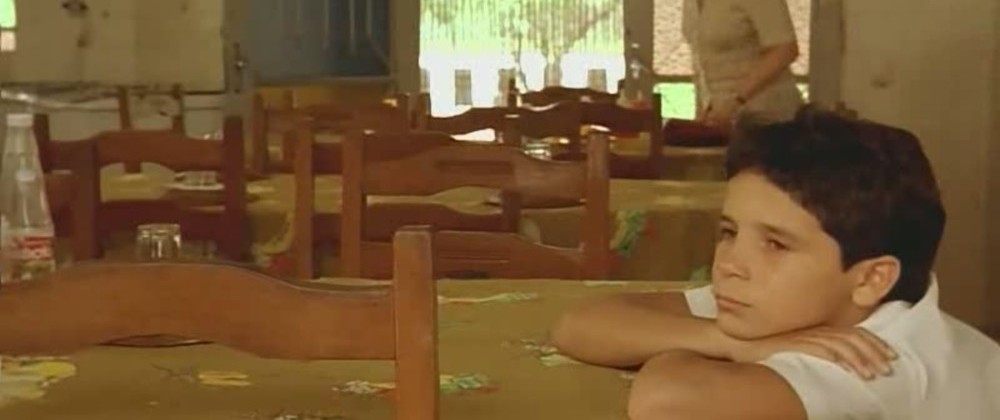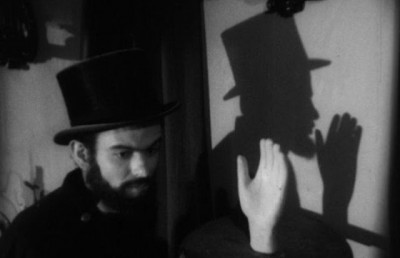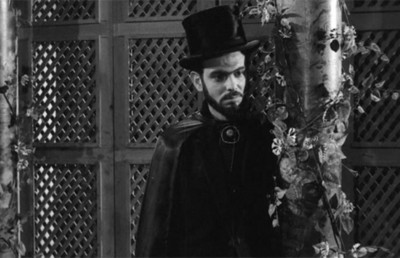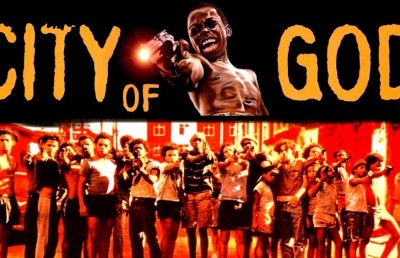Central Station and Cinema Nôvo
Walter Salles'

Summing up some of the general trends of the recent, post Cinema Nôvo developments in Brazilian film, authors Randal Johnson and Robert Stam point out that on the positive side, “Brazilian cinema has won its own public, it now speaks directly to the Brazilian people rather than to a national and international elite,” and further remark on the present films “unprecedented levels of technical excellence” (Johnson and Stam, p. 45). Both observations certainly apply to Walter Salles’ Central Station (1998), which was not only successful in its own country, but also became an international success of probably unmatched dimensions in the history of Brazilian filmmaking. The very fact of its remarkable commercial as well as critical success (2 Oscar nominations and a Golden Globe award) both within and outside of Brazil makes it somewhat difficult to speak of Central Station in terms of the Cinema Nôvo tradition. After all, the films of the Brazilian New Wave’s first phase (until ca. 1964), of which Vidas Secas (Nelson Pereira dos Santos, 1963) is one of the finest examples, were not exactly box-office hits. Cinema Nôvo’s well-deserved critical acclaim stemmed mainly from its international success, which was mostly limited to European and other art film festival circles, where the films were seen and appreciated by a certain type of audience (mainly middle-class intellectual). For all its remarkable accomplishments, this last point can be (and has been) held against the early Cinema Nôvo: as much as it spoke of the common Brazilian people (the poor, struggling, hungry, illiterate, neglected, and until then largely ‘invisible‘ people and their struggles and undeserved hardships, but also their dignity and humanity and beauty); as much as it spoke for them (in fact, rendering them, the previously silent ones, a voice for possibly the first time), it did not speak to them. The people who were so hauntingly and unforgettably portrayed were not the ones to go and watch the films of which they were the main subject.
The films of the so-called second phase of the movement, roughly framed by a coup in 1964 and the “coup within the coup” in 1968 (and thus made at an exceptionally repressive time in recent Brazilian history), made this dilemma even more evident: works such as Terra em Tramse (Glauber Rocha, 1967) became increasingly more self-reflexive and introspective, and were mainly concerned with the immensely difficult situation in which Brazil’s politically engaged intellectuals and artists, including the filmmakers, found themselves after losing much of their former hopes for possible change and reform. It was only with the emergence of Cinema Nôvo’s third phase that filmmakers began to climb out of the excessively introspective hole that they had dug for themselves, and once again moved forward to create innovative works –this time characterized by a healthy lack of respect for their predecessors, and a knack for parody and the grotesque.
In films such as Macunaima (Joaquim Pedro de Andrade, 1969), the sombre mood of first and second phase films is discarded in an attempt to discover new modes of expression for the same serious subjects. By adopting some of the labels historically applied to presumably marginal, “third-world” cultures, and turning them into scathing parodies, the so-called “cannibal-tropicalist” phase had found a new way of dealing with Brazil’s troubled past and present. What furthermore differentiated third-phase films from their predecessors was their popularity in the double sense, in contrast to films of the first phase (and to a much lesser degree, the second phase) which had only been “popular” with regard to their subject matter, and thus inadvertently relinquished their potential power to reach and move the people (Johnson and Stam, pp. 36-37.) Indeed, it is perhaps chiefly in terms of their mass appeal and commercial success that two otherwise so different films as Macunaima and Central Station can be compared—both films being works about as well as for the Brazilian people (and a wider audience especially for the latter film).
In addition, these films can also be compared thematically: both depict the characters’ journeys between urban and rural Brazil. However, these journeys are described in entirely different ways and with different results. In Macunaima, the main protagonists’ story begins in the “Amazon jungle“ and moves to the city, only to return full circle to its starting point in the countryside. The order of the journey is reversed in Central Station, which sets out in Rio de Janeiro, the quintessential Brazilian urban centre, and moves on to the “heart” of Brazil, the legendary sertão (where one of the protagonists will remain while the other returns to the city).
Apart from the evident stylistic differences in the portrayal of the locations, the raison d’être of the respective journeys varies drastically. In Central Station, the journey trope is used in a more conventional way: as a chance for a character’s personal growth and self-discovery. In this case, it is mainly Dora, an elderly, hardened, utterly disillusioned and cynical woman, who is gradually and thus convincingly transformed while on the road with her unwanted foundling. Once she leaves behind Rio and her meagre station in life as a letter writer for the illiterate, the crust of cynicism and indifference which shielded her from life’s disappointments and hardships begins to crack, revealing a warm, altruistic, and vulnerable woman underneath.
From the beginning, Dora’s and Josué’s road trip has a clearly defined purpose: the search for the boy’s father (apart from being the only way out of Dora’s dilemma, since she cannot remain in the city after “stealing back” Josué from the criminals to whom she had sold him in the first place, for the price of a TV). But a second, and equally important reason for the quest is gradually revealed on the road: the search for the boy’s lost father also symbolizes Dora’s search for her own father, and for a sense of belonging that she never had. In the end, the discovery of Josué’s half brothers (and thus a new home and family for him), as well as Dora’s self-discovery and acceptance of her true emotions and longings imbue the film with a clear sense of accomplishment and closure. The film ends on a note of hopefulness and faith (in goodness, humanity, the future of Brazil and its people?).
The trip to the city in Macunaima, in contrast, displays none of these (arguably conventional and somewhat sentimental, but certainly optimistic) elements. From the onset, the journey has no goal or purpose, but happens as accidentally as everything else in the protagonists’ lives. Consequently, when the main “hero” and his family return triumphantly from their adventures in the city (laden with consumer goods that are utterly useless in the jungle), no sense of accomplishment or closure is conveyed. Despite Macunaima’s adventures and experiences in the city he remains virtually unchanged, not having gained in knowledge or maturity at all –clearly a biting comment on the wide-spread, arrogant western perception of “third world” people as lazy, stupid, incapable of learning, and therefore in need of “protection” and “civilization” for their own sake and benefit. Because of our ironic distanciation from the protagonists, ??Macunaima??’s death at the end of the film does not touch us emotionally or strike us as tragic in the least.
Aside from the journey motif and the contrast between rural and urban Brazil depicted in the two films (plus the fact that both are shot in colour), this is almost as far as the similarities go. Even with regard to the settings and locations, the films could hardly be more different. Macunaima, in keeping with the third phase’s cannibalist-tropicalist mode and its taste for the absurd and carnivalesque, displays exaggerated, grotesque, and explicitly artificial sets, costumes, performances, etc. (for example, the hut where ‘baby’ Macunaima is ‘born’ in the beginning of the film is “half backlander and half Indian“ (Stam, p. 241); the millionaire and cannibal Pietro Pietra lives in a bizarre and vulgar “kitsch palace where rococo clocks and breathing mannequins cohabit with Egyptian sphinxes“ (Stam, p. 242), etc.
In contrast, Walter Salles (in his own words) was concerned with making his film look and feel as authentic as possible. He preferred the realism of location shots over studio sets, and aimed at keeping art direction to a minimum in order not to intervene with the inherent realism of the locations (director’s commentary on the DVD soundtrack). His notion of realism (which for the tropicalist films was a non-issue) is clearly oriented toward the works of the earlier Cinema Nôvo such as Vidas Secas. Like Vidas Secas, much of Salles’ film takes place in the sertão –giving the viewer an idea to what extent the traditional hinterland has changed– or remained the same. Salles’ ‘realism’ is necessarily a compromise between the authentic and the commercial. Compared to the landscapes in Vidas Secas, his version of the sertão seems much less harsh, dry, and severe: instead, the cinematography reveals a more pleasingly beautiful, at times grandiose, and somehow even fertile-looking scenery. The colour scheme includes a rich and extensive palette, which includes not only the sand-coloured and washed out hues of the earth, but also intensely blue skies (reflected in many of the colourful interiors), luscious dark-green trees and shrubs, and a wide range of warm yellow/orange/terracotta shades. Indeed, as we move away from the city, the colours seem to become more intense, contributing to an overall sense of freshness and renewed life that somewhat parallels the characters’, and especially Dora’s, interior “journey.” Evidently, comparing the different depictions of a landscape once filmed in minimalist black-and-white and once in luscious colour only makes limited sense. However, since both directors very consciously developed a certain style to portray what to them represented the essence of the sertão, the presence or absence of colour is only one aspect of the films’ respective styles. In Dos Santos’ film, the land has a very severe, harsh beauty. The land is scorched, the sun is blindingly bright –as the carrier of drought and the threat of starvation for the poor peasant family. The sertão is at once depicted “as it is” (in accordance with the tradition of neorealism) and as a potential menace and death-trap, as poor and stern as its struggling inhabitants. The people, like the land on which they struggle for subsistence and survival, have a certain tragic dignity –in the fact that they keep struggling–but not much optimism, as there is no reason to be optimistic.
??Central Station??’s sertão, in contrast, is portrayed in a much more hopeful tone (thus, for example, the changes in its colour palette in comparison to Rio). Although Dora’s and Josué’s journey is marked by frequent ups and downs, hopes followed by the shattering of hope, and also by the gradual changes in the characters’ complex relationship with one another, the land seems to promise hope from the beginning. From the first scenes on the road onwards, scenic beauty abounds –with occasional peaks, as in the scene of Dora and Josué standing on top of a majestic mountain, before they go and place Ana’s handkerchief on an altar which stands isolated in the middle of nowhere. Though the land becomes vaster and emptier, it also metaphorically becomes fuller, and richer– filled with meaning, peace, serenity, tradition, beauty, and hope. The two figures never seem lost in the country, but rather (almost) found. This is in stark contrast to the earlier scenes in Rio, which was characterized by a maddening hustle and bustle, by the anonymity and facelessness of the crowds (interestingly, the only people with “real faces,” character, and beauty are the ones who dictate their simple and touching messages to the cynical and indifferent Dora, most of them apparently being displaced country folk sending letters home), and the city’s immanent dangers and cruelty.
This last point is perhaps best illustrated in the terrifying scene of a young shoplifter being chased and shot for a petty theft, and also in the indifference of the city people toward the little boy who has just lost his mother and has nowhere to turn. Compared to these rather pessimistic images, the country appears more as a haven than a dead end. Being penniless seems somehow less shameful in a place where everybody is poor, but where people are also more willing to help each other (e.g. Cesar). The contrast between city and country is also made very clear when the theme of petty theft is repeated. Hungry and broke, the two protagonists take turns stealing food from Cesar’s friend, the shop owner, and are basically caught, but rescued from the situation by the simple fact that they have somebody who (wrongly) stands up for their honour. Here, stealing out of hunger has no real negative consequences, whereas in Rio the same offence meant death. (The motif of hunger, of course, is also depicted very movingly, forcefully, and pessimistically in Vidas Secas, when the wife is forced to kill the family’s pet parrot in order that they may live).
The overall optimistic tone of Salles’ journey is further emphasized by the ample use of religious imagery throughout. The landscape is virtually teaming with images of the Virgin Mary and Jesus (interestingly, Jesus is also the name of the boy’s lost father, thus giving the quest for Jesus the father a double entente). The religious imagery culminates in the scenes of the pilgrims at Bom Jesus do Norte. This scene lends itself to a comparison with another, pre-Cinema Nôvo film, O Pagador de Promessas (Anselmo Duarte, 1962), in which the simple and unfaltering faith of a naïve, illiterate peasant is callously betrayed by a priest. The death of the man because of his strong but simple faith equals an outright condemnation of the role of the Catholic Church in Brazil. In Central Station, in contrast, religion is shown throughout as a positive force that helps and strengthens people. This is especially true for Catholicism (most of the imagery is Catholic) but not exclusively so (e.g., one of the nicest and most altruistic characters, Cesar, is an evangelist. (Unlike O Pagador de Promessas, Central Station omits a discussion of alternative/indigenous religious beliefs).
Despite Salles’ attempt to model Central Station after a (neo-) realist tradition, it certainly does not possess the almost overwhelmingly stark and tragic sense of realism that Vidas Secas conveys. Instead, it is perhaps best seen as a kind of compromise between a popular, accessible, commercial film on the one hand, and a realist film in the tradition of Cinema Nôvo’s beginnings on the other hand. Crucial for a certain sense of realism was the director’s decision to use many non-professional actors throughout the film (and there are indeed great and moving moments when these visibly ‘real’ people dictate ‘real’ letters to their loved ones). The use of non-professional actors of course was also a key strategy for directors like dos Santos. Other elements in Central Station, however, clearly break with the earlier traditions. The non-diegetic, non-traditional music on the soundtrack, for example, is used throughout the film in a conventional way, that is, for setting/enhancing certain moods. In contrast, one of ??Vidas Secas??’ most striking, and somewhat uncomfortable, characteristics is its relative silence, which is broken rarely by dialogue, even more rarely by diegetic music on only a couple of occasions, and otherwise only by a number of subtle, diegetic sounds (most memorably the family’s screeching cart wheel).
There are, however, two “magic” moments in Central Station where a sudden, and almost overwhelming sense of realism is created. One occurs in Dora’s and Josué’s last part of the ride to Bom Jesus on the back of a truck, crammed in with simple peasants and pilgrims. The brief shot of a black woman breaking into a traditional, religious song would fit well into one of Cinema Nôvo’s earliest films. The second shot, which was probably the most beautiful and surprising moment in the entire film, passes so quickly that it could almost be missed. While the two protagonists are riding in Cesar’s truck, a few frames suddenly appear that are so visually strange and astonishing that they appear to be from a different film, or even a documentary. We see a few peasants and their primitive horse carts passing by to the right, while the frame is cut in half by a Jesus mascot mounted on the hood of the truck. The next shot shows them on the other side of the road, after the truck has passed them, slowly moving away from us. The sudden sense of realism, of utmost verisimilitude, is quite overwhelming. These scene seems not part of a film but of life.
Select Bibliography
“Brazil,” in South American Cinema: A Critical Filmography, 1915-1994, edited by Timothy Barnard and Peter Rist (Austin: University of Texas Press, 1998), pp. 130-131; 134-136; 156-158.
Darlene J. Sadlier, “A Cinema of the People: Vidas Secas,” in Nelson Pereira dos Santos (Urbana and Chicago: University of Illinois Press, 2003), pp. 31-48.
“The Shape of Brazilian Film History,” in Brazilian Cinema, Randal Johnson and Robert Stam (East Brunswick, N.J.: Associated University Presses, 1982), pp. 17-51.
Carlos Diegues, “The Cinema that Brazil Deserves,” in The New Brazilian Cinema, edited by Lucia Nagib (London: I.B. Tauris, 2003), pp. 23-35.
Robert Stam, “From Auto-Critique to Anthropophagy, 1964-1971,” in Tropical Multiculturalism: A Comparative History of Race in Brazilian Cinema and Culture (Durham and London: Duke University Press, 1997), pp. 233-255.













